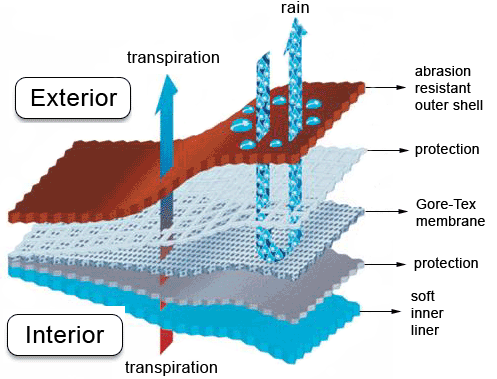For a few years I worked for a company that owned a stake in a clothing factory in China that specialized in athletic gear.
They weren't the best manufacturer, they made a good product and the stitching and quality assurance was always excellent, but the base materials were... mediocre. (please note, none of this was the factory's fault, nor my employer's, for reasons I'll get into.)
To explain, let's look at Gore-Tex.
Gore-Tex is a patented fabric design that companies can license to make their products more water resistant, but also breathable. Gore-Tex is good stuff, and it's expensive.
The company I worked for could not afford a Gore-Tex license, but they had to sell in a market with Gore-Tex-enhanced clothing from other brands.
So what did they do to compete? Well, mark down the retail price of their product to try and capture the low-end market with their inferior construction.
.
.
.
Psyche! No!
They raised the price. Some of their offerings became more expensive than their Gore-Tex competitors.
That's right. They knew they had an inferior product, but they also knew the average person doesn't know nothing about no Goreg-Plex.
But people understand pricing. Or at least they think they do. People have been conditioned to believe that higher price equals higher quality.
In many instances this is true, especially in items that can be easily compared. A BMW X7 is better than a Ford Explorer: it has more power, more seating arrangements, better trim – and a non-expert can see this things right away, thus justifying (to some people) the fact that the X7 price tag doubles the Explorer's.
But the bike industry is tricky. Since bikes and gear haven't fundamentally changed much in 150 years, it's hard to stand up and say, "My new design is better than yours."
Bikes are simple objects, and here's the joke we like to tell about upgrading bikes:
Here're your options,
You can have it light
You can have it cheap
You can have it tough
Pick any two.
There're always compromises. But how does a consumer gauge quality is such a squishy field?
This has stumped cycling marketers since the first bike got sold. There's weight – sure, a lighter bike is probably a better bike. Unless the bike rides like wet noodles. So there's stiffness testing, but where do you draw the line for too stiff and just right?
What this all comes down to, is in an industry where there are few quality identifiers and the public is unsure of what constitutes quality in the first place, one of the only ways for a company to stand out is to raise prices and hope the public goes along with the ruse.
And by the way, the public isn't innocent here. For years I made a living off upselling rich people while being totally honest that the more expensive item didn't offer a performance advantage. They didn't care, and neither did I, really. It's a form of conspicuous consumption that, on the surface, doesn't seem to hurt anybody.
Doesn't seem to. But may I remind everybody of the 2008 financial collapse – where housing prices grew like a bubble, and when that bubble burst it nearly destroyed the housing industry, as well as the world's economy.
What I'm saying is that the inflation we're currently seeing in bike prices isn't a necessarily signal of the market maturing, but could very well be a bubble in the making.
.
.
.
Anyway, as a long-term industry professional, I'm a little worried about the health of the business right now. The cycling industry is in a moment of transition away from ma-and-pa shops and towards e-tailing and niche sales. High-end prices are going up, but high-end quality hasn't changed much in the eleven+ years of my professional tenure (with a few notable exceptions).
So my promise to you, the reader, is that I'll continue to write my articles and reviews without bias. I will intentionally seek out premium items, try them out, and compare them with less-expensive alternatives. I don't make money off this blog, so if the thing sucks, I'll let you know.
And maybe together we can burst the bubble but keep chewing the gum. –Ok awkward metaphor. What I mean is that it's ok to love new cycling stuff, but we should love it for what it is, not what it costs.
 |
| Rip't |


This comment has been removed by a blog administrator.
ReplyDeleteI haven’t any word to appreciate this post.....Really i am impressed from this post....the person who create this post it was a great human..thanks for shared this with us. Mountain biking tips
ReplyDeleteThis is my first time visit to your blog and I am very interested in the articles that you serve. Provide enough knowledge for me. Thank you for sharing useful and don't forget, keep sharing useful info: how high should my bike seat be
ReplyDeleteI am impressed. I don't think Ive met anyone who knows as much about this subject as you do. You are truly well informed and very intelligent. You wrote something that people could understand and made the subject intriguing for everyone. Really, great blog you have got here. how to change the inner tube on a bike
ReplyDelete